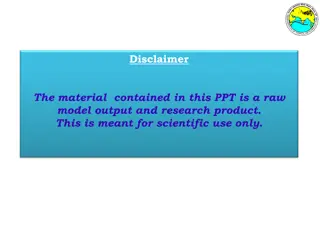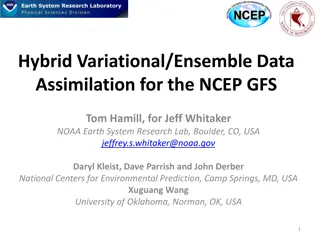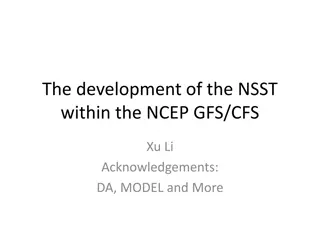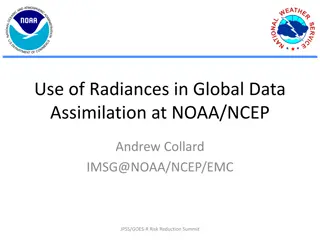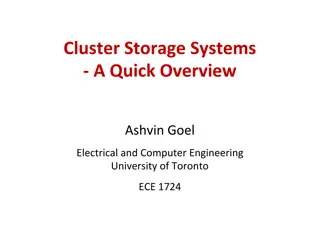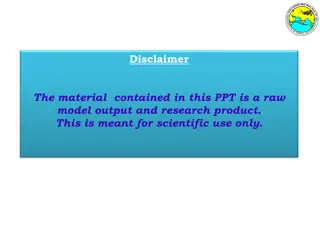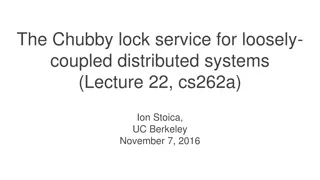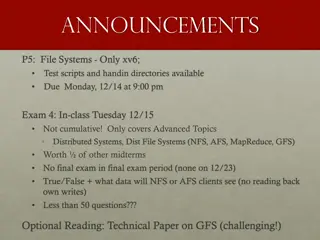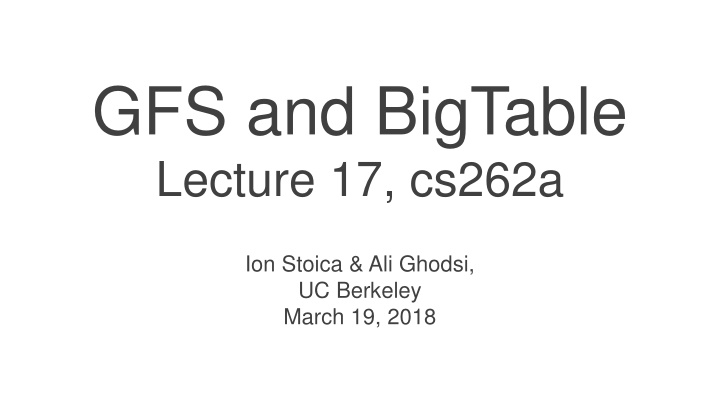
Google File System and BigTable - CS262A Lecture
Explore the concepts behind Google File System (GFS) and BigTable as discussed in the CS262A lecture by Ion Stoica and Ali Ghodsi at UC Berkeley. Learn about the design, components, differences, assumptions, and design requirements of these distributed file systems.
Download Presentation

Please find below an Image/Link to download the presentation.
The content on the website is provided AS IS for your information and personal use only. It may not be sold, licensed, or shared on other websites without obtaining consent from the author. If you encounter any issues during the download, it is possible that the publisher has removed the file from their server.
You are allowed to download the files provided on this website for personal or commercial use, subject to the condition that they are used lawfully. All files are the property of their respective owners.
The content on the website is provided AS IS for your information and personal use only. It may not be sold, licensed, or shared on other websites without obtaining consent from the author.
E N D
Presentation Transcript
GFS and BigTable Lecture 17, cs262a Ion Stoica & Ali Ghodsi, UC Berkeley March 19, 2018
Todays Papers The Google File System, Sanjay Ghemawat, Howard Gobioff, and Shun-Tak Leung, SOSP 03 http://static.googleusercontent.com/media/research.google.com/en//archive /gfs-sosp2003.pdf BigTable: A Distributed Storage System for Structured Data. Fay Chang, Jeffrey Dean, Sanjay Ghemawat, Wilson C. Hsieh, Deborah A. Wallach, Mike Burrows, Tushar Chandra, Andrew Fikes, Robert E. Gruber, OSDI 06 http://static.googleusercontent.com/media/research.google.com/en//archive /bigtable-osdi06.pdf
Distributed File Systems before GFS Pros/Cons? Pros/Cons?
What is Different? Component failures are norm rather than exception, why? File system consists of 100s/1,000s commodity storage servers Comparable number of clients Much bigger files, how big? GBs file sizes common TBs data sizes: hard to manipulate billions of KB size blocks
What is Different? Files are mutated by appending new data, and not overwriting Random writes practically non-existent Once written, files are only read sequentially Own both applications and file system can effectively co- designing applications and file system APIs Relaxed consistency model Atomic append operation: allow multiple clients to append data to a file with no extra synchronization between them
Assumptions and Design Requirements (1/2) Should monitor, detect, tolerate, and recover from failures Store a modest number of large files (millions of 100s MB files) Small files supported, but no need to be efficient Workload Large sequential reads Small reads supported, but ok to batch them Large, sequential writes that append data to files Small random writes supported but no need to be efficient
Assumptions and Design Requirements Implement well-defined semantics for concurrent appends Producer-consumer model Support hundreds of producers concurrently appending to a file Provide atomicity with minimal synchronization overhead Support consumers reading the file as it is written High sustained bandwidth more important than low latency
API Not POSIX, but.. Support usual ops: create, delete, open, close, read, and write Support snapshot and record append operations
Architecture Single Master (why?)
Architecture 64MB chunks identified by unique 64 bit identifier
Discussion 64MB chunks: pros and cons? How do they deal with hotspots? How do they achieve master fault tolerance? How does master achieve high throughput, perform load balancing, etc?
Consistency Model Mutation: write/append operation to a chunk Use lease mechanism to ensure consistency: Master grants a chunk lease to one of replicas (primary) Primary picks a serial order for all mutations to the chunk All replicas follow this order when applying mutations Global mutation order defined first by lease grant order chosen by the master serial numbers assigned by the primary within lease If master doesn t hear from primary, it grant lease to another replica after lease expires
Atomic Writes Appends Client specifies only the data GFS picks offset to append data and returns it to client Primary checks if appending record will exceed chunk max size If yes Pad chunk to maximum size Tell client to try on a new chunk
Master Operation Namespace locking management Each master operation acquires a set of locks Locks are acquired in a consistent total order to prevent deadlock Replica Placement Spread chunk replicas across racks to maximize availability, reliability, and network bandwidth
Others Chunk creation Equalize disk utilization Limit the number of creations on same chunk server Spread replicas across racks Rebalancing Move replica for better disk space and load balancing. Remove replicas on chunk servers with below average free space
Summary GFS meets Google storage requirements Optimized for given workload Simple architecture: highly scalable, fault tolerant Why is this paper so highly cited? Changed all DFS assumptions on its head Thanks for new application assumptions at Google
Motivation Highly available distributed storage for structured data, e.g., URLs: content, metadata, links, anchors, page rank User data: preferences, account info, recent queries Geography: roads, satellite images, points of interest, annotations Large scale Petabytes of data across thousands of servers Billions of URLs with many versions per page Hundreds of millions of users Thousands of queries per second 100TB+ satellite image data
(Big) Tables A BigTable is a sparse, distributed, persistent multidimensional sorted map (row:string, column:string, time:int64) cell content
Column Families Column Family Group of column keys Basic unit of data access Data in a column family is typically of the same type Data within the same column family is compressed Identified by family:qualifier, e.g., language :language_id anchor :referring_site Example: <a href="http://www.w3.org/">CERN</a> appearing in www.berkeley.edu Cell content Referring site
Timestamps Each cell in a Bigtable can contain multiple versions of same data Version indexed by a 64-bit timestamp: real time or assigned by client Per-column-family settings for garbage collection Keep only latest n versions Or keep only versions written since time t Retrieve most recent version if no version specified If specified, return version where timestamp requested time
Tablets Table partitioned dynamically by rows into tablets Tablet = range of contiguous rows Unit of distribution and load balancing Nearby rows will usually be served by same server All rows are sorted Accessing nearby rows requires communication with small # of servers Usually, 100-200 MB per tablet Users can control related rows to be in same tablet by row keys E.g., store maps.google.com/index.html under key com.google.maps/index.html
Another Example from https://www.slideshare.net/romain_jacotin/undestand-google-bigtable-is-as-easy-as-playing-lego-bricks-lecture-by-romain-jacotin
SSTable Immutable, sorted file of key-value pairs Chunks of Blocks plus an index Index of block ranges, not values Index loaded into memory when SSTable is opened Lookup is a single disk seek Client can map SSTable into mem from https://www.slideshare.net/romain_jacotin/undestand-google-bigtable-is-as-easy-as-playing-lego-bricks-lecture-by-romain-jacotin
Putting Everything Together SSTables can be shared Tablets do not overlap, SSTables can overlap Tablet Tablet apple boat aardvark apple_two_E SSTable SSTable SSTable SSTable (from www.cs.cmu.edu/~chensm/Big_Data_reading.../Gibbons_bigtable-updated.ppt)
API Tables and column families: create, delete, update, control rights Rows: atomic read and write, read-modify-write sequences Values: delete, and lookup values in individual rows Others Iterate over subset of data in table No transactions across rows, but support batching writes across rows
Architecture Google-File-System (GFS) to store log and data files. SSTable file format Chubby as a lock service (another lecture) Ensure at most one active master exists Store bootstrap location of Bigtable data Discover tablet servers Store Bigtable schema information (column family info for each table) Store access control lists
Implementation Components: Library linked with every client Master server Many tablet servers Master responsible for assigning tablets to tablet servers Tablet servers can be added or removed dynamically Tablet server store typically 10-1000 tablets Tablet server handle read and writes and splitting of tablets Client data does not move through master
Tablet Assignment Master keeps track of live tablet servers, current assignments, and unassigned tablets Master assigns unassigned tablets to tablet servers Tablet servers are linked to files in Chubby directory Upon a master starting Acquire master lock in Chubby Scan live tablet servers Get list of tablets from each tablet server, to find out assigned tablets Learn set of existing tablets adds unassigned tablets to list
BigTable vs. Relational DB No data independence: Clients dynamically control whether to serve data form memory or disk Client control locality by key names Uninterpreted values: clients can serialize, deserialize data No multi-row transactions No table-wide integrity constraints API: C++, not SQL(no complex queries) (from www.cs.cmu.edu/~chensm/Big_Data_reading.../Gibbons_bigtable-updated.ppt)
Lessons learned Many types of failure possible, not only fail-stop: Memory and network corruption, large clock skew, hung machines, extended and asymmetric network partitions, bugs in other systems, planned and unplanned hardware maintenance Delay adding new features until it is clear they are needed E.g., Initially planned for multi-row transaction APIs Big systems need proper systems-level monitoring Most important: value of simple designs Related: use widely used features of systems you depend on as less widely features more likely to be buggy
Summary Huge impact GFS HDFS BigTable HBase, HyperTable Demonstrate the value of Deeply understanding the workload, use case Make hard tradeoffs to simplify system design Simple systems much easier to scale and make them fault tolerant


